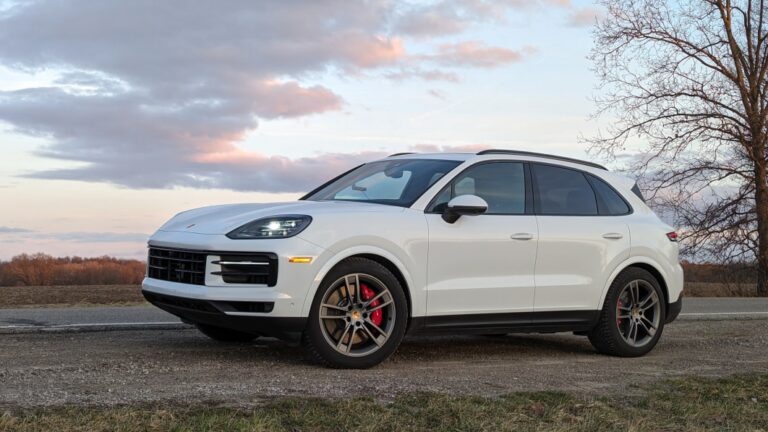Pros: Nothing drives better at its price; tech is leading-edge and works well; unlimited customization and a plethora of performance versions
Cons: More expensive than competitors; limited cargo space; you’ll be forking out big money for every last option
The 2024 Porsche Cayenne is one of the best do-it-all machines in existence, and it also happens to be heavily updated for the 2024 model year. Despite its SUV shape and SUV practicality, the Cayenne can set a blistering pace down any road – or even track – and be the source of many wide grins. BMW’s M division, Mercedes’ AMG and many others may try, but none can fully measure up to the Cayenne for driving enjoyment. The Cayenne isn’t a one-trick pony either, because assuming you spec its available air suspension, the ride is plush and beautifully damped.
Porsche’s 2024 update brings the Cayenne’s interior into an even more competitive space, matching its closest rivals in the screen size and tech race. In base form, the Porsche is still going to feel a little spartan compared to others, but that can be flipped on its head should you fancy a spin through the configurator.
And that brings us to the Cayenne’s biggest downside: It’s expensive. You’re not going to line it up feature-for-feature with other midsize luxury SUVs and find better value in the Porsche, because what you’re paying for is a driving experience that’s unmatched by others in its class. The varied powertrains on offer means said experience will vary wildly depending on the model. A Cayenne S feels like a straightforward performance SUV with its rumbling, new-for-2024 V8 never quite disappearing from earshot. Meanwhile, a plug-in E-Hybrid model will allow you to drive a respectable number of miles in electric mode for maximum efficiency.
It’s ultimately fairly simple whether you should or shouldn’t choose a Cayenne. If you’re mostly focused on luxury and the latest tech, a BMW X5, Mercedes-Benz GLE and many others will be a better buy. However, if the driving experience is paramount, then the Cayenne is worth every extra penny you spend over the competition.
Interior & Technology | Passenger & Cargo Space | Performance & Fuel Economy
What it’s like to drive | Pricing & Trim Levels | Crash Ratings & Safety Features
What’s new for 2024?
The Cayenne is refreshed for 2024 in both its standard and Coupe forms, but the changes are substantial enough that we called it “version 3.5” in our 2024 Cayenne First Drive where you can read all about the numerous big changes Porsche applied to its biggest car.
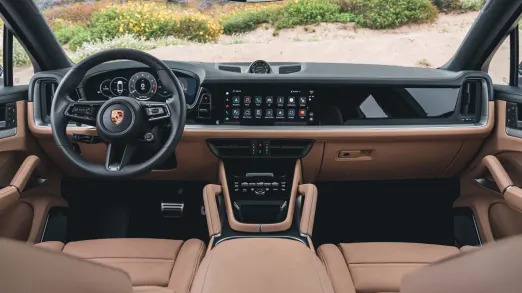
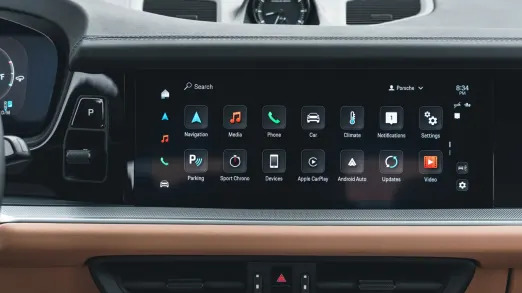
What are the Cayenne’s interior and in-car technology like?
Porsche completely revamped the Cayenne’s interior for 2024, leaving virtually nothing from the pre-refresh car. You switch it on via a button instead of a key-like twist toggle to the left of the steering wheel. The instrument cluster is now a fully digital 12.6-inch screen – there are seven different layouts available, and don’t worry, a couple of them put the traditional Porsche tachometer right in the center where it should be. Porsche’s latest Porsche Communication Management (PCM) infotainment software runs on the wide-format 12.3-inch touchscreen integrated into the dash. The system is more colorful than the Cayenne’s previous PCM, with icons easier to differentiate at a glance, but it’s mostly similar in overall UI concept. That includes the column of menu icons permanently docked on the left side of the standard 12.3-inch touchscreen, including one to quickly engage and exit Apple CarPlay. The last screen is an optional one for the passenger measuring 10.9 inches, which allows the passenger to operate the navigation system or watch streaming video, while a polarized filter ensures that the driver cannot see what’s shown.
The climate control panel in the center stack is totally new for 2024, too, and represents a simplification of the button-filled center stack Porsche used before. It’s a better laid-out climate system, but the execution is flawed. Pushing down on the icons provides haptic feedback, but the entire black trim piece moves with each “button” push, which comes across as cheap, especially for a Porsche.
As you’d expect from any Porsche, the details and build quality are as good as it gets. You’ll enjoy a well-insulated cabin, lovely materials (especially should you spend some money on leather and more in the limitless configurator) and ergonomics that’ll make any enthusiast swoon. And don’t forget that you need not limit yourself to the already wide assortment of interior colors in the configurator – Porsche will be happy to outfit the interior of your Cayenne however you want it.

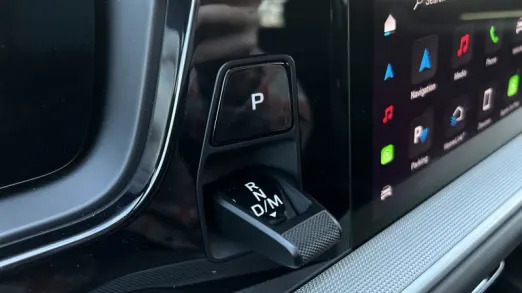
How big is the Cayenne?
For a Porsche, it’s huge. For a midsize SUV, it’s pretty typical on the outside. Its length and width are comparable to a BMW X5, but it’s a little lower in overall height. Its curb weight is much lower, which certainly benefits performance. Inside, Porsche curiously doesn’t provide passenger dimensions for either 2024 Cayenne, but in our experience driving it, there is sufficient rear seat legroom for a 6-footer to sit behind another. There’s also more than enough space for a kid to kick about in their child seat without hitting the passenger up front. That said, we also like that the back seat slides forward to bring kids (or perhaps dogs in harnesses) a little closer to within your reach or to create extra cargo space. That applies to both body styles, but from there the conventional SUV and Cayenne Coupe diverge.
The conventional Cayenne has no shortage of rear headroom, but the specs say there is only 27.2 cubic feet of space behind the raised back seat. That dips considerably to just about 22 cubic feet if you opt for an E-Hybrid variant. That’s notably less than some of its closest competition like the BMW X5 or Mercedes-Benz GLE, but we suspect this overt difference is the result of Porsche using a different measurement technique than others. While we’re confident it’s still a smaller space for the segment, we doubt it’s that bad. It’s wide and deep, especially when you utilize that sliding second row, and it’s also superior to what you get with the new Cayenne Coupe. The chopped roof body style has noticeably less rear headroom, and cargo capacity drops by about 7 cubes or more relative the SUV body style. We go in-depth with the Coupe’s cargo area in this luggage test.

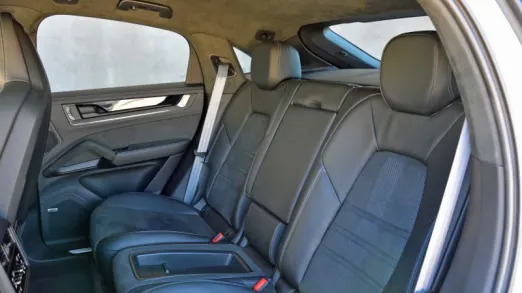
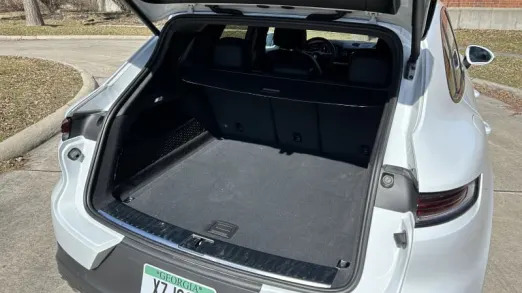
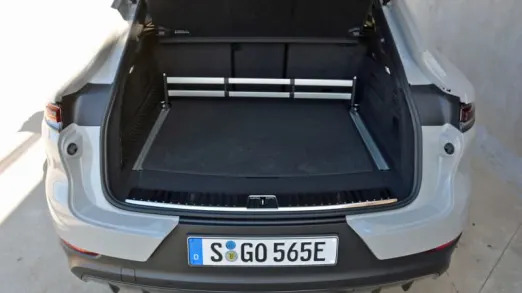
SUV body style left, Coupe body style right
What are the Cayenne’s fuel economy and performance specs?
Bear with us for a moment, because there are lots of different Cayenne variants to get through. However, all are fitted with an eight-speed automatic transmission and all-wheel drive. Both the SUV and Coupe body styles are offered with every powertrain, except for the Turbo GT, which is Coupe-only.
The base Cayenne is powered by an updated 3.0-liter turbocharged V6 that makes 348 horsepower and 368 pound-feet of torque, propelling it to 60 mph in 5.7 seconds (5.4 with Sport Chrono). It’s rated for 17 mpg city, 23 mpg highway and 19 mpg combined.
A Cayenne S gets you the 4.0-liter twin-turbo V8, a new addition to the S this year that was previously rocking a V6 engine. It produces 468 horsepower and 442 pound-feet of torque, netting you a 0-60 mph time of 4.7 seconds (4.4 with Sport Chrono). Fuel economy dips to 15/21/17 with this trim.
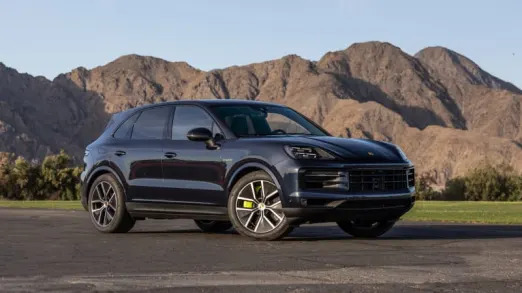
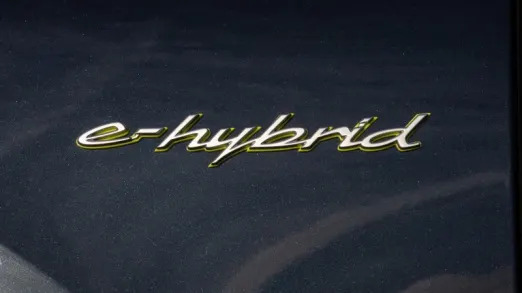
There are three plug-in hybrid trims available for 2024, too. The entry-level one is the E-Hybrid, which consists of a 3.0-liter turbocharged V6 and an electric motor making a combined 463 horsepower and 479 pound-feet of torque. It comes standard with the Sport Chrono package (all E-Hybrid models do) and does the 0-60 mph run in 4.6 seconds. All hybrid Cayennes pack a 25.9 kilowatt-hour battery pack, and while EPA range ratings weren’t out at the time of this writing, we expect it to beat last year’s 15-mile all-electric range thanks to the battery pack being larger than before.
The next rung up is the new Cayenne S E-Hybrid rated for a combined 512 horsepower and 553 pound-feet of torque from a more powerful 3.0-liter turbocharged V6 and electric motor, allowing it to hit 60 mph in just 4.4 seconds.
Porsche’s most potent electrified model is the Turbo E-Hybrid that pairs its 4.0-liter twin-turbo V8 with an electric motor for a rowdy 729 horsepower and 700 pound-feet of torque, allowing it to hit 60 mph in just 3.5 seconds.
The wildest Cayenne variant is the Turbo GT that favors raw track performance over any hybrid/green intentions. It houses a potent 4.0-liter twin-turbo V8 that produces 650 horsepower and 626 pound-feet of torque, giving it a 0-60 mph time of 3.1 seconds – that’s almost a half second quicker than the Turbo E-Hybrid that has 79 extra horses. Shows you how much chopping weight from the Turbo GT helps. Similar to the E-Hybrid variants, EPA ratings were not available for the GT at the time of publishing.
What’s the Cayenne like to drive?
In typical Porsche fashion, the Cayenne is the best-driving vehicle you can buy anywhere near its price point. From the base model to the Turbo GT, there’s a Cayenne for whatever use case you might have in mind. Do note that your experience will vary wildly depending on the version you spring for, though. Even options within the various trim levels will make a big impact on your driving experience. For example, a Cayenne with the $2,390 PASM air suspension, $3,590 PDCC (active roll stabilization), $1,290 rear-axle steering and $9,080 (PCCBs) ceramic brakes will drive extremely differently than one without all of the above. We’d suggest test driving Cayennes with and without these various performance options to see which might be worth the money to you.
Regardless of options, a Cayenne in any form is going to be a driver’s SUV with crisp steering and delightful engine/transmission response. It’s essentially setting the performance standard that every other performance SUV is chasing. Porsche moving the V8 into the S model for 2024 is an even bigger boon for enthusiasts, too, as you get to enjoy the rumbly V8 at an even lower price point than before. We drove the S for this review in particular, and found it to be neither over- nor under-powered, making it a real sweet spot for enthusiasts to get into the Cayenne lineup at a reasonable price and perhaps still have budget left over for the ultra-pricey performance and material add-ons.
And outside the Cayenne S, the only other version we’ve tried of the refreshed Cayenne is the E-Hybrid. Acceleration is unsurprisingly quiet and smooth when driving using the all-electric range. But there is one possible hangup: the brake pedal. The E-Hybrid has the same firm initial pedal response as other Cayenne models do, but for whatever reason, this leads to some clunky transitions between the regenerative and mechanical brakes that make for difficult modulation and jerky stops, especially at lower speeds. Perhaps this could be attributed to our specific E-Hybrid test car having the carbon ceramic brake option, so choose wisely when speccing your PHEV Cayenne.
What other Porsche Cayenne reviews can I read?
2024 Porsche Cayenne First Drive Review
More in-depth information about what changed for 2024, plus extensive driving impressions from the winding roads of Malibu.
What is the 2024 Cayenne’s price?
The base Cayenne starts at $80,850, including the $1,650 destination charge. Add $5,100 if you want the Coupe body style. As is the case with most Porsches, standard equipment is relatively sparse, though we’ll note some new-for-2024 standard features include Matrix Design LED headlights, lane-keep assist, proximity key for locking and unlocking, and wireless phone charging. We’d be here all day if we read you through the list of significant features available for box-checking, so it’s best that you just head to the Porsche configurator to spec one out yourself should you care to – we promise, it’ll be fun.
The base prices for all the 2024 Cayenne and Cayenne Coupe models are below, and you can find a fuller breakdown of features and specs here on Autoblog.
Cayenne: $79,200
Cayenne E-Hybrid: $93,350
Cayenne S: $97,350
Cayenne S E-Hybrid: $100,750
Cayenne Turbo E-Hybrid: $148,550
Cayenne Coupe: $85,950
Cayenne E-Hybrid Coupe: $97,350
Cayenne S Coupe: $103,750
Cayenne S E-Hybrid Coupe: $106,050
Cayenne Turbo E-Hybrid Coupe: $153,050
Cayenne Turbo GT: $196,300
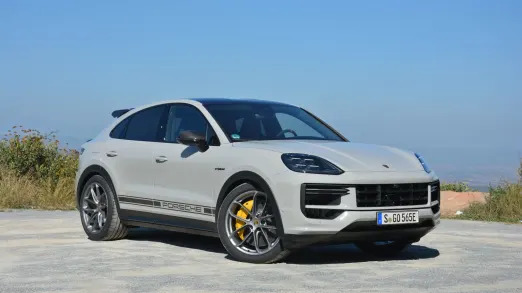
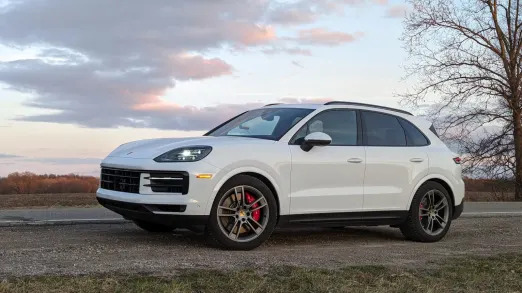
What are the Cayenne’s safety ratings and driver assistance features?
The Cayenne comes standard with forward collision warning, automatic emergency braking, blind spot and rear cross-traffic warning, lane-keeping assist, front and rear parking sensors and traffic sign recognition. Other driver assistance features include adaptive cruise control, an enhanced adaptive cruise control system called InnoDrive (adds lane-centering steering assist and proactively adjusts speeds based on various factors), a 360-degree view camera, remote parking assist to control the car via your smartphone and an infrared night vision assist. All of these optional extras are very expensive add-ons when compared to other luxury automakers.
The Cayenne has not been crash-tested by a third party at the time of this writing.


